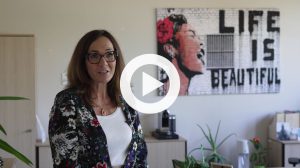Our school
The European Schools began in October 1953 in Luxembourg, on the initiative of officials of the European Coal and Steel Community, with the support of the Community’s institutions and the Luxembourg Government. Initially the school was accommodated in a house on Avenue Pasteur (1953), then in the Villa Lentz, followed by Boulevard de la Foire (1957) and finally the Kirchberg plateau (1973-1974). This experiment in education, side by side, of children of different mother tongues and nationalities quickly took shape as the six different governments and Ministries of Education co-operated in matters of curricula, appointment of teachers, inspection and recognition of levels attained.
In April 1957, the signing of the Protocol made the Luxembourg School the first official European School. The first European Baccalaureate was held there in July 1959 and the qualification was recognised as fulfilling basic entrance requirements by all the universities of the member states.
The success of this educational experiment encouraged the European Economic Community and Euratom to press for the establishment of other European Schools at their various centres. Today there are 13 traditional European Schools in 6 different countries.
Before the setting up of the European School, Luxembourg II and the separation, initially, of the nursery-primary cycle, the school’s pupil population reached as many as 3802 pupils, coming from the 27 EU Member States. Until September 2012, the European School, Luxembourg I was the only one of the European Schools with all the language sections and groups.
Today, our school has 3350 pupils enrolled in 10 language sections: Dutch, English, Finnish, French, German, Lithuanian, Polish, Portuguese, Spanish and Swedish. In addition, there are 3 other languages, so-called SWALS (Students without Language Section) – Bulgarian, Estonian, Latvian – in which students can be enrolled.
We are very proud to say that the objectives for the European Schools have been defined by the first director of our school, Mr Marcel Decombis, and have lost none of their validity.
The words which express the essential aims of the European Schools have been sealed, in parchment, into the foundation stones of all the schools:
Educated side by side, untroubled from infancy by divisive prejudices, acquainted with all that is great and good in the different cultures, it will be borne in upon them as they mature that they belong together. Without ceasing to look to their own lands with love and pride, they will become in mind Europeans, schooled and ready to complete and consolidate the work of their fathers before them, to bring into being a united and thriving Europe.
(Marcel Decombis, Head of European School, Luxembourg between 1953 and 1960)
The European schools’ mission statement
The mission of the European Schools is to provide all pupils with multilingual broad education of high quality from early education to secondary school, and to equip upper secondary students to adult life and form a basis for further learning.
The mission of the European school Luxembourg I is to provide a high quality multilingual and multicultural education for our students in an environment that guarantees the security and well-being for all.
The main aims are:
- Offer every pupil the broadest education of quality from nursery to Baccalaureate, an education that gives our pupils confidence in the future.
- Educate a European citizen, who promotes our common values and respects diversity, a citizen with the spirit of solidarity and the drive for common achievements.
- Promote in pupils all-round academic capacities, both in the field of language skills, as well as those of mathematics and sciences.
- Enhance the importance of our school community, by aiming to know better each-other, heighten cooperation among stake-holders, and strengthen dialogue and respect in our social environment, and with all possible partners outside school.

